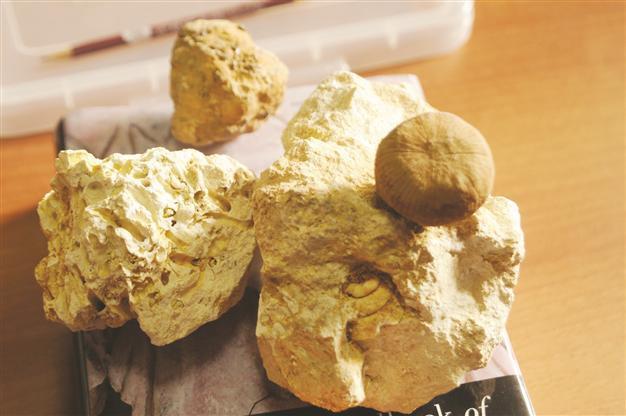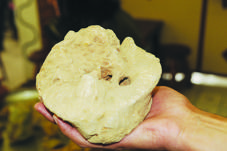Mardin’s soil unveils rich fossils during excavation
MARDİN - Anadolu Agency

Archaeology Department Associate Professor Güner Coşkunsu says that Mardin and its vicinity was a brand new and productive working field. AA photos
Experts report that the eastern province of Mardin is home to a shellfish, which became extinct some 144 million years ago and known as the “ancestor of mussel” as well as sea urchins and extinct sea gastropods from 550 million years ago, which is known as the “ancestor of cockroaches.”Noting that Turkey’s richest fossils were in Mardin, experts claim that Mardin had sea 50 million years ago and the fossils of sea creatures should be examined by paleontologists. Academics invite researchers to the region, saying that the region is rich not only in terms of archaeology but also fossil and mineral.
Mardin Artuklu University (MAU) Head of Archaeology Department Associate Professor Güner Coşkunsu said that Mardin and its vicinity was a brand new and very productive working field and the city was like a laboratory for scientists.
“Mardin is too rich in terms of fossil. We want to share them with the scientific world but since it is not our profession, paleontologists should make research in the region,” said Coşkunsu.
 He said that they included some samples, which they had found coincidentally, in the collection at the university’s archaeology laboratory for education, research and documentation, and continued:
He said that they included some samples, which they had found coincidentally, in the collection at the university’s archaeology laboratory for education, research and documentation, and continued:“Sometimes our citizens, who are interestd in this issue, make contributions to this collection. Although I knew very few about fossils, I estimated the existence of old fossils from Mardin’s archaeological period. Besides fossils of many sea organisms, there are also fossils of animals which we think they are terrestrial mammals.”
He said that those fossils should be kept for the next generations and legal arrangements should be made to prevent the damage or smuggling of these fossil reservoirs.
Ancestors of cockroaches and mussels in Mardin
Dicle University Geography Department member Sabri Karadoğan said that Mardin and its vicinity, known for its rich culture, faith and traditional architecture, had an interesting and rich geological and geomorphological structure.
He said that mineral and fossil samples discovered by Coşkunsu and his team were amazing, adding, “The fact that the archaeology department give importance to geological factors as well as archaeological and cultural objects is praiseworthy. The organics like mussel are the remains of creatures that lived 58-70 million years ago. They were completely found in Mardin and its vicinity. There are fossils from various periods here. For example, we have shellfish fossil from 66-144 million years ago. We can call it the ancestor of mussel. There are also fossils of the ancestors of today’s sea urchins and starfishes as well as gastropods, which are the ancestors of today’s cockroaches.”
















